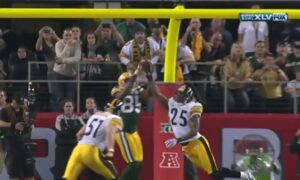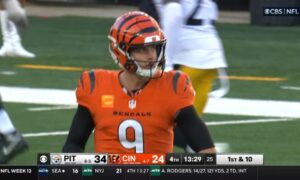For a team facing so much adversity in the past season and heading into the next with a litany of questions to address, it’s natural to consider the issues and how they can either go right or wrong, as well as how they will affect the broader dynamics and future success of the team, both heading into this season and into the future.
Though not statistically true, it is technically true that every team enters the offseason with the potential to finish the year as the league champion or as the first team on the clock in the next draft.
Some teams have a wider realistic range than others, and I think the Pittsburgh Steelers are one of those teams. Think of them as Schrödinger’s franchise; in February, they are both future champions and future owners of the top draft pick.
In order to gain a better feel for not only the issues facing the team this year, but how those issues might play out, it’s useful to take the devil’s advocate approach. This is the pessimistic side of the coin.
Question: Can the Steelers afford to continue to do without a traditional nose tackle?
The Steelers parted with longtime nose tackle Casey Hampton last offseason, instead resolving to turn the keys to the position over to former defensive end Steve McLendon. The plan seemingly almost went awry as McLendon took a trip to visit the Green Bay Packers and was instead rewarded with a three-year contract to replace one-year the restricted free agent tender to which he’d been signed.
Given the vote of confidence that the stability of a multi-year contract provides, McLendon headed into his first season as a starter sandwiched between Ziggy Hood and Brett Keisel. And looking at the rushing statistics up the middle of the defense when McLendon was on the field, it’s hard to argue that he wasn’t relatively successful.
But is it that simple? Unfortunately not.
When defensive coordinator Dick LeBeau was inducted into the Hall of Fame, he spoke largely about his present rather than his past. He spoke about how the great players on his defense make him look smart, and how it all starts with the defensive line.
He focused on the nose tackle position, and about how the nose tackle makes the game a nine-on-ten matchup, because the nose tackle routinely occupies two blockers, and that that is what makes the 3-4 defense that he runs so successful.
That isn’t McLendon’s game. That isn’t Al Woods’ game either, for that matter.
If you go back through the film of the Steelers’ 2014 season, you might be surprised to see how rarely offenses bothered to try to block McLendon with two players. He simply doesn’t have the mass to warrant that type of attention.
Now, his superior athleticism allows him to alleviate some of the issues caused by his inability to consistently command and navigate double teams, but it fundamentally rearranges how the Steelers’ 3-4 defense operates, and this could be as big an issue to the defensives woes as any, though there are multiple contributing factors.
Without the ability to consistently gain that man advantage with the nose tackle being double teamed, it’s much more difficult to get a free man into the backfield to make plays, or to simply be unblocked to make a tackle near the line of scrimmage.
This isn’t McLendon’s fault; he is what he is. But barring continuing to add weight, I don’t see him ever fulfilling this key aspect of the position. Add to that the fact that McLendon’s actual production in the pass rush was a disappointment last season, and we see the not so surprising attention that Louis Nix III has been receiving among Steelers media and fans, because they don’t believe the McLendon model is sustainable for this defense. They may be right.







